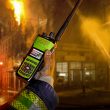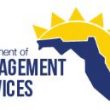Software-defined radio comes of age
What is in this article?
Software-defined radio comes of age
In 1991, the term “software defined radio” was coined to describe radio devices implemented in software and running on generic hardware. This idea of software-programmable radio technology was a departure from traditional, hardware-specific radio architectures, and offered improvements in flexibility and upgradability.
Before these multi-band, multi-mode radios could be fully implemented, however, advancements were necessary in the processing, A/D and RF hardware. These radios were not targeted for development until the year 2000 or beyond.
In the beginning
Early cellular basestations were analog, with a shift to basestations built around digital hardware in the late 1980s. The evolution of SDR continued in the 1990s mostly through military interoperability endeavors. Commercial applications of SDR remained neither practical nor cost effective until the past few years. Advances in A/D converters, RF technology and processing hardware have allowed SDR to finally achieve commercial viability.
SDR encompasses a wide range of communications systems, from reconfigurable hardware-based digital radios to fully programmable software radios, but can be grouped into three categories (see table 1).
The first tier
The simplest example of a SDR is a dual-mode cell phone. This is the modal SDR. A dual-mode cell phone has two hardware radios in it, one for each supported standard. Software determines which standard needs to run and activates the correct radio. Though the phone allows switching between the modes built into the radio, the user is limited only to those modes and lacks the ability to upgrade the system with new waveforms.
The next generation
Reconfigurable SDR is the category of software radio that has been built for defense applications over the last decade, typically involving a combination of processing technologies such as application-specific integrated circuits (ASICs), fieldprogammable gate arrays (FPGAs), and digital signal processors (DSPs). Despite good performance on current systems, the software investment for these specialized systems is high, and they rapidly become obsolete as technology development accelerates.
One such example is the SpeakEasy system. It was built around a combination of FPGAs and 40 MHz TI C40 DSPs. By the time the first prototype was demonstrated, COTS DSPs were available at 166 MHz. As the SpeakEasy software was tied not only to the C40, but also to a specific layout of C40s and FPGAs, the new DSPs could not be exploited.
The final frontier
The most advanced type of SDR, Software Radio (SWR), maximizes software reuse across platforms and hardware generations. SWR implements the signal processing software as an application-level program running on top of a standard operating system (OS) (whether on general purpse — GP, central processing units — CPUs, DSP, or other processing engines), giving it the flexibility lacking in other SDR types.
The use of application-level software and an OS both reduces software development costs and allows the underlying hardware components to be upgraded without incurring the high cost of redeveloping the software. As a result, SWR systems can track the Moore's Law performance curve over time at a much lower cost than other types of SDRs.
As SDR technology progresses, the flexibility and performance of SWR will give it a clear advantage over not only traditional radio architecture, but also other SDR types. Its unique ability to add features through software upgrades and to enable a single radio to support multiple standards has drawn interest to this technology from many markets, from cellular providers to public safety agencies.












